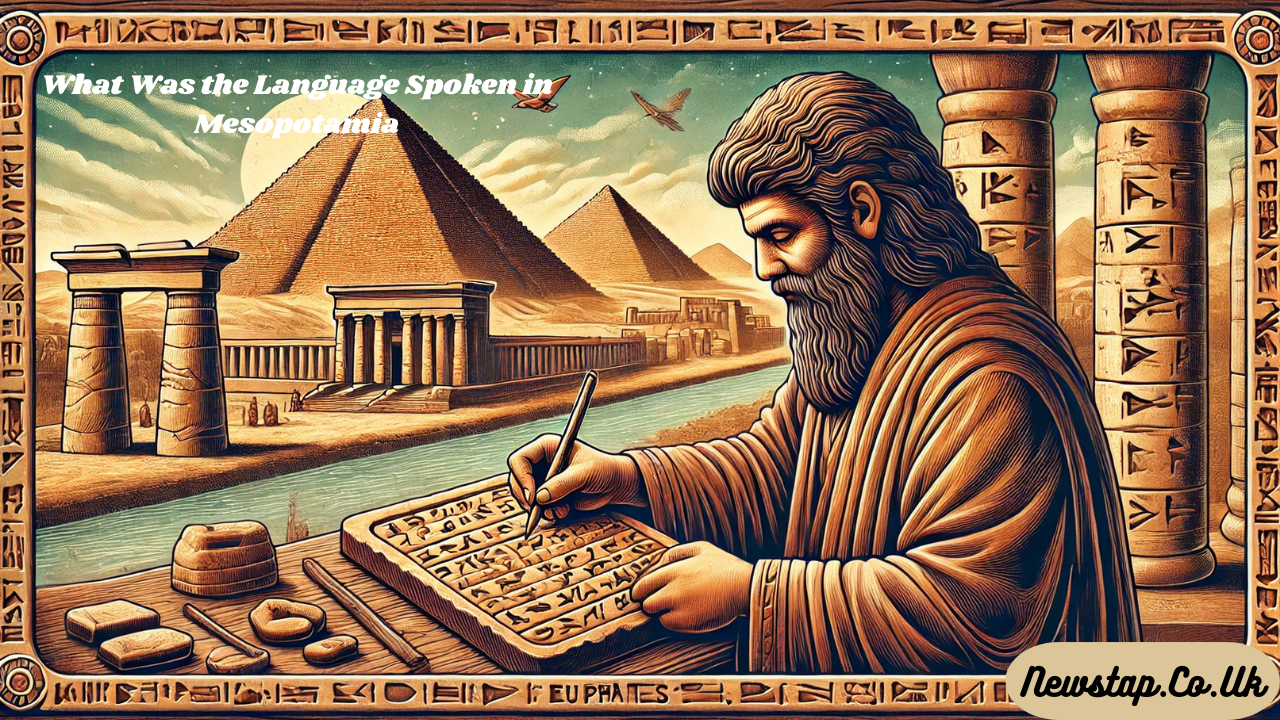Mesopotamia, often referred to as the “cradle of civilization,” was a region of great historical significance. Situated between the Tigris and Euphrates rivers, this area witnessed the rise of some of the earliest human civilizations, including the Sumerians, Akkadians, Babylonians, and Assyrians. One of the most fascinating aspects of Mesopotamian culture was its diverse linguistic heritage. So, what was the language spoken in Mesopotamia? Let’s delve into the linguistic landscape of this ancient region.
Sumerian: The First Recorded Language
The earliest known language of Mesopotamia was Sumerian. Spoken by the Sumerians, who established the first cities in the region around 3100 BCE, Sumerian holds the distinction of being the first written language in human history. The invention of cuneiform, a system of writing using wedge-shaped marks on clay tablets, allowed the Sumerians to document their language and culture.
Sumerian was a language isolate, meaning it had no known relatives or linguistic connections to other languages. It served as the primary language of administration, religion, and literature in early Mesopotamia. Some of the most famous Sumerian texts include the Epic of Gilgamesh and numerous hymns, prayers, and administrative records.
However, Sumerian eventually ceased to be a spoken language around 2000 BCE. Despite this, it remained a significant cultural and literary language for centuries, much like Latin in medieval Europe.
Akkadian: The Dominant Tongue
As Sumerian declined, Akkadian rose to prominence. Akkadian, a Semitic language, became the lingua franca of Mesopotamia around the 3rd millennium BCE. It was spoken by the Akkadians, Babylonians, and Assyrians, making it one of the most widely used languages of the ancient Near East.
Akkadian had two main dialects:
- Babylonian: Spoken in southern Mesopotamia, Babylonian was the language of diplomacy and trade across much of the ancient world.
- Assyrian: Spoken in northern Mesopotamia, this dialect was used in the Assyrian Empire, which became one of the most powerful states in the region.
The cuneiform writing system, initially developed for Sumerian, was adapted to write Akkadian. Thousands of Akkadian texts, including royal inscriptions, letters, treaties, and literary works, have been discovered, providing invaluable insights into the history and culture of Mesopotamia.
Other Languages of Mesopotamia
While Sumerian and Akkadian were the primary languages, Mesopotamia’s linguistic landscape was far more diverse. Over the centuries, various languages were spoken in the region, reflecting its complex history and interactions with neighboring cultures.
Hurrian
Hurrian was spoken by the Hurrians, a people who lived in northern Mesopotamia and the surrounding regions during the 2nd millennium BCE. Although Hurrian was not a dominant language, it played a role in Mesopotamian history, particularly through its influence on the Mitanni kingdom.
Elamite
Elamite was spoken in the region of Elam, located to the east of Mesopotamia (modern-day southwestern Iran). While not native to Mesopotamia, Elamite interacted with Mesopotamian languages through trade and diplomacy.
Aramaic
By the first millennium BCE, Aramaic began to replace Akkadian as the common language of Mesopotamia. Aramaic, a Semitic language, gained prominence due to its simplicity and widespread use by the Neo-Assyrian and Neo-Babylonian empires. Even after the fall of these empires, Aramaic remained a vital language in the region, influencing later languages and dialects.
The Evolution of Mesopotamian Languages
The languages spoken in Mesopotamia evolved over thousands of years, reflecting the region’s dynamic history. Sumerian gave way to Akkadian, which in turn was replaced by Aramaic. This linguistic evolution was influenced by shifts in political power, cultural interactions, and the practical needs of communication.
The Role of Writing
Writing played a crucial role in preserving Mesopotamian languages. The invention of cuneiform allowed the documentation of laws, literature, and daily life. Without this writing system, much of what we know about Mesopotamian languages and culture would have been lost to history.
Cultural Legacy
Even after these languages ceased to be spoken, their cultural and intellectual contributions endured. Sumerian and Akkadian texts have provided modern scholars with invaluable insights into ancient science, mathematics, astronomy, and mythology. Aramaic, meanwhile, continued to influence languages in the region and beyond, including Hebrew and Arabic.
Conclusion: A Rich Linguistic Heritage
So, what was the language spoken in Mesopotamia? The answer is not simple, as Mesopotamia was home to a rich tapestry of languages over millennia. From the isolated Sumerian to the widely spoken Akkadian and later Aramaic, these languages reflect the complexity and diversity of Mesopotamian civilization.
Understanding the languages of Mesopotamia offers a window into the lives, thoughts, and achievements of its people. It reminds us of the profound impact language has on shaping history and preserving human culture. Mesopotamia’s linguistic heritage is a testament to the ingenuity and adaptability of its ancient civilizations, leaving an indelible mark on the story of humanity.
Also Read: Crackstreams: Everything You Need to Know About This Popular Streaming Platform



